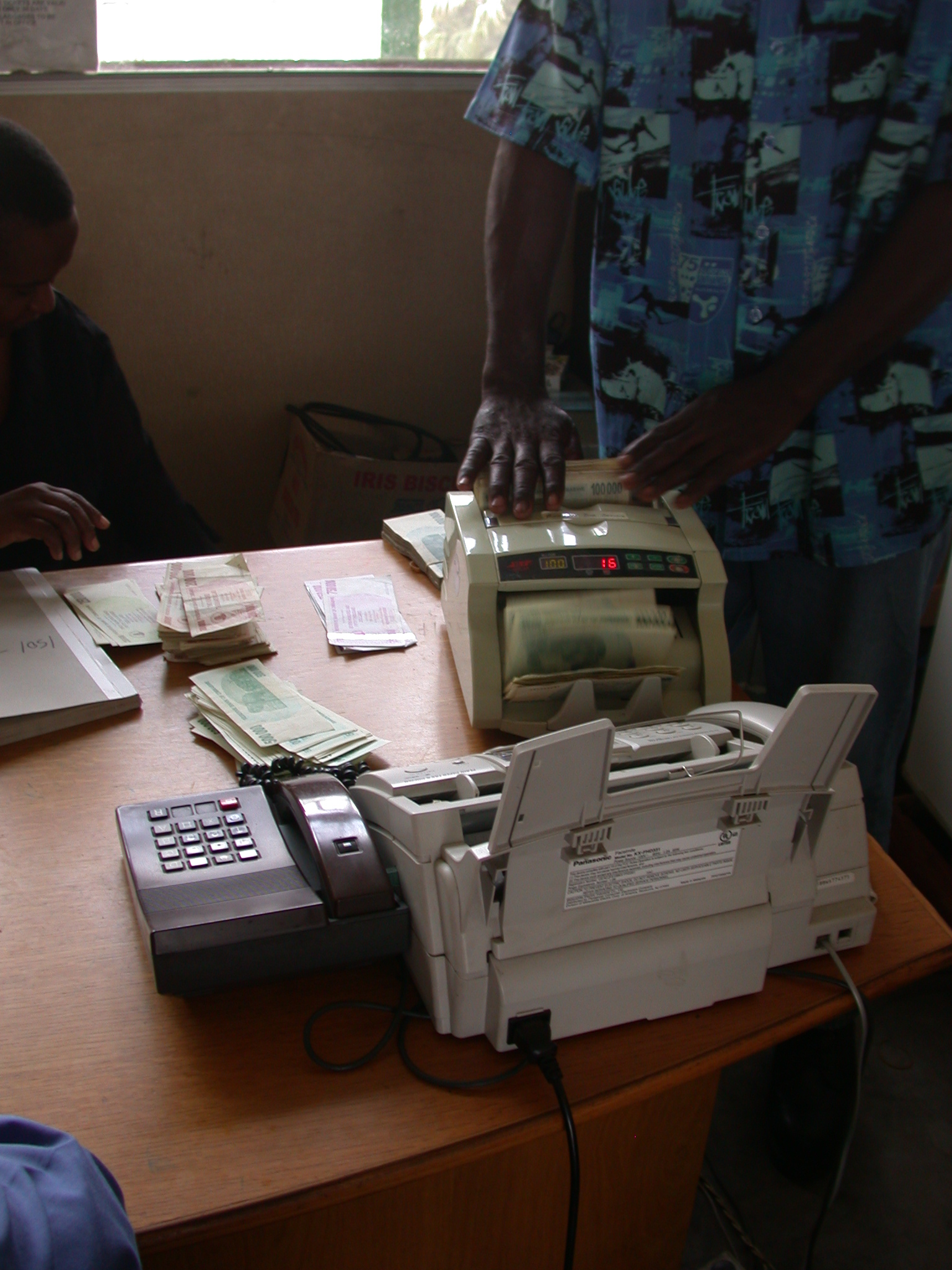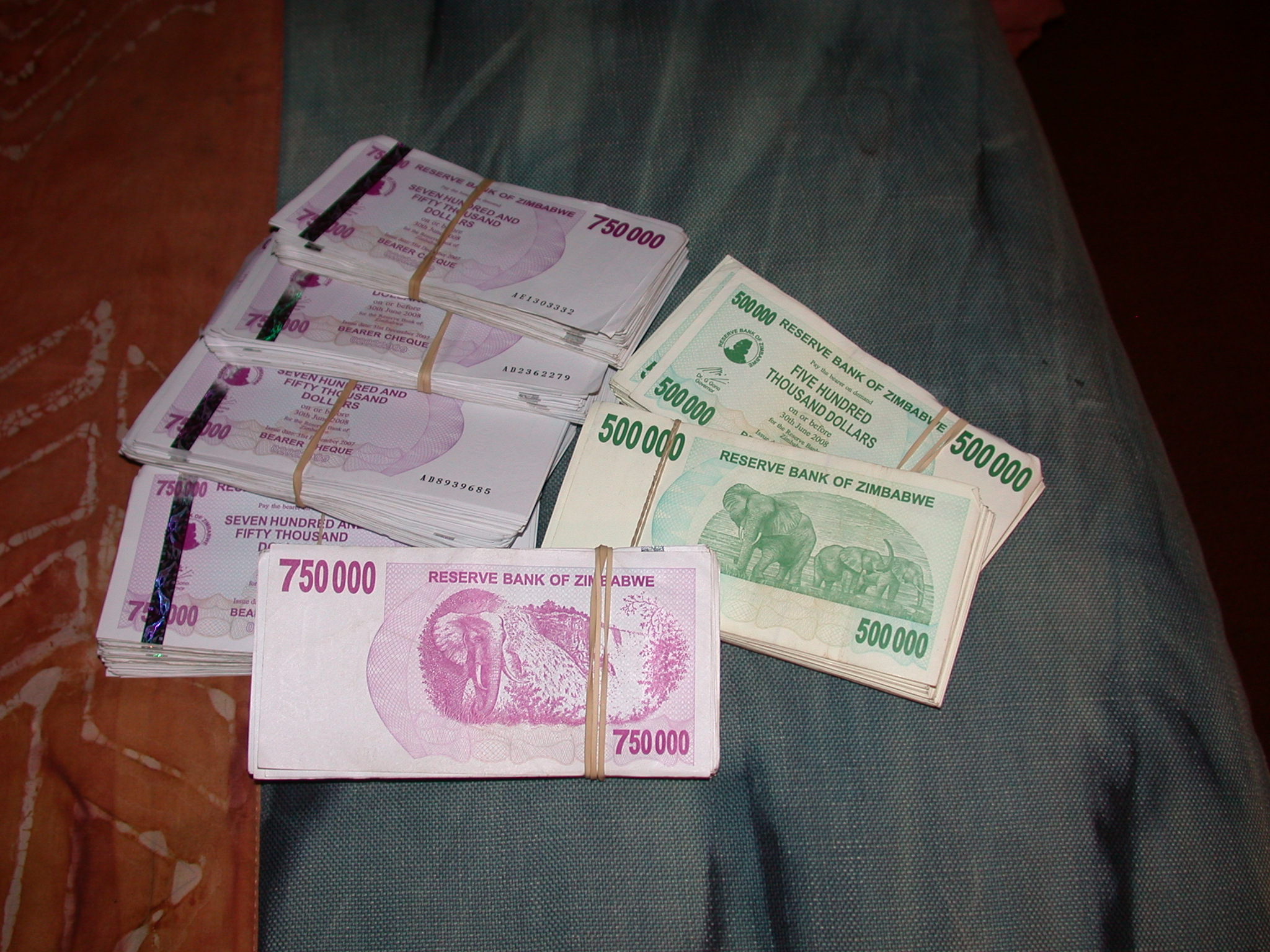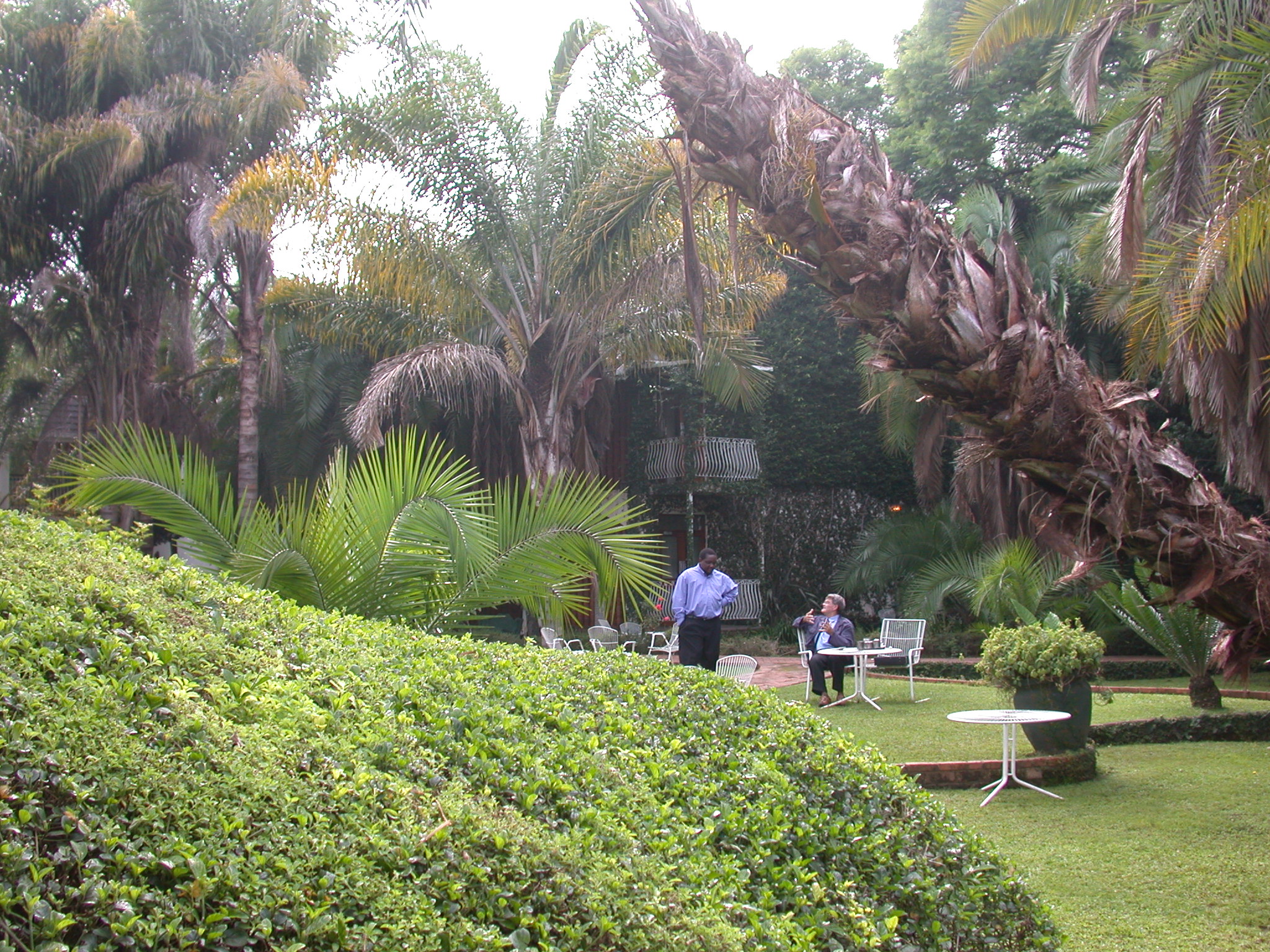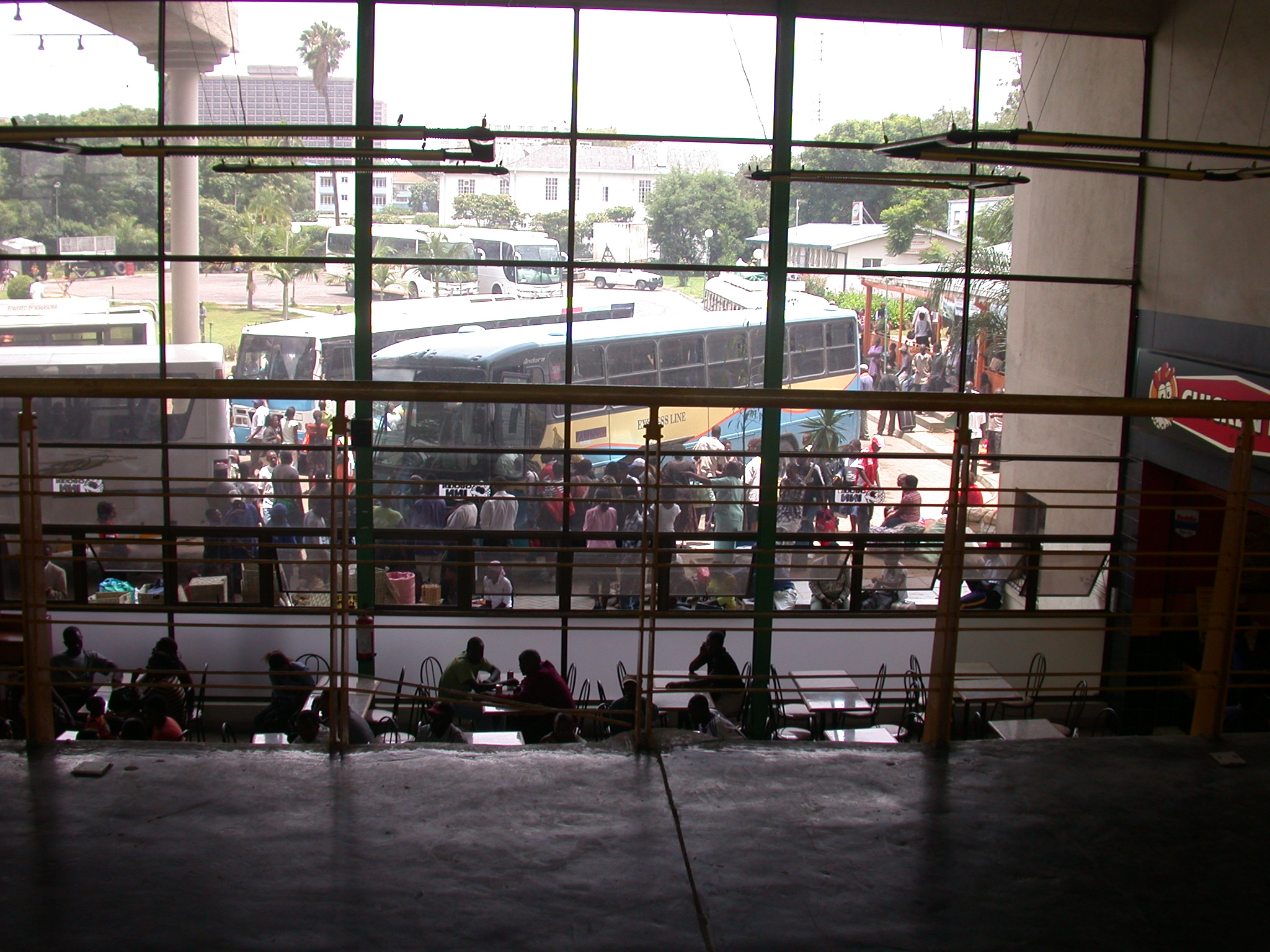My arrival in Harare came with fears about how 8000% monthly inflation, food shortages, and a repressive dictator who hates gay people would influence my stay and feelings about Zimbabwe and its people.
I was a bit bewildered on arrival at the airport since I didn’t want to change money at the official rate, which was far below the black market rate. Yet I didn’t know who I could trust to change money on the black market without getting arrested or cheated or whatever.
Luckily, I met Sarah, a wonderful person who helped me figure out how to adapt to life in Zimbabwe right there at the airport. She was asking around about the current exchange rate and helped me meet a Zimbabwe local who gave me a free ride along with my bags in the back of a pickup truck to meet my friend Richard in the parking lot of a well-known hotel.
Richard put me up at his place for the day and night and showed me around town a bit. I saw the grocery stores full of food in Harare, although with prices rapidly becoming unaffordable for people whose salaries weren’t pegged to foreign currencies. He took me to an excellent Chinese restaurant with an interesting twist to the menu… each dish had a price code listed by it and the list of prices corresponding to the codes appeared on the last page of the menu, so it could be updated on a regular, even daily, basis. When it came time to pay, Richard pulled out the bag he carries around everywhere and laid a pile of cash about six inches tall on the table.
The government announced the new 10,000,000 dollar note around the time I arrived in the country, to help with the problem of physically carrying around so much cash for even the simplest of transactions. In most places that do any regular business involving large amounts of cash, they have a cash counting machine, like the one pictured below.


As soon as I changed money, I became a multimillionaire!
Richard’s father was arriving that day to stay at his place so he helped me find a hotel room. Luckily, we found one that wasn’t horridly expensive as most of them are for foreigners paying a special hard-currency foreigner price in Harare. I stayed at the lovely Bronte Hotel.


I saw a placard announcing the groups meeting there at the hotel. One of the groups listed was GALZ, which I knew as Gay and Lesbian Zimbabweans. I was shocked to see them listed, since I thought the repression would be so great that they would have to meet in private homes, ever since Mugabe’s “gays are worse than dogs” statement. I had the privilege of popping in one of their meeting sessions to wish them well, letting them know that people all over the world have heard about their struggle and understand the difficult conditions under which they are operating with threats of violence, imprisonment, and death, not to mention public humiliation and loss of employment.
On January 18, 2008, I visited the Zimbabwe Museum of Human Sciences, in Harare, Zimbabwe.
Machanga people
Oral tradition says origins in Hlengwe people who arrived before Soshongana, a Ngoni (Ngohi?) whose real name is Mamukese / Manukosi, son of Chiyangeni. Manukese fled Shaka during Mfecune period. Soshongana found the Hlengwe and established the Gaza state in early 19th century after defeating all tribes…
Machangana men pierced ears using knife, sign of bravery, skin loins, mayadha white cloth, mubodhi head ring, tnbaya(?) urinary chamber
Machangana women wear minceka, salempore (chibhelana / chibhabhela), seashells (mbambamba), leg bangles (madheya(?))
Zvitumbarse drums
Ranzala groundhornbill drum
Thumb piano
Initiation – instructor (mudzhabi)
Girls’ initiation = kombla
Boys’ initiation = mupundu(?)
Food processing: grind (kukanda) food using pestle (musi) and mortar (xthurhi), in chihizo for final processing
Ngula grainbin
Farming–
Crops: mvele (small grains), mashalani (sorghum), mahuva (millet)
Wooden hoes
Conservation of trees as shed for crops (minduti yemerele (or yemevele???))
Singing songs, political or even vulgar, only while pounding grain
Beer pots (mbita)
Head cushion (simbo)
Head rests (mukigeio)
Woven grain storage container
Chieftancy–
Nzalema power in chief’s stomach, vomited at death
Chosen from eldest son of first wife, if chief too young, nephew (tukulu, who is not in line for chieftancy) would hold the post (kuomela)
Chiefs had spear (thlari), elephant’s tusk (lumhondo lwendhlopfu), leopard’s skin, and headring (mubhodhi)
King buried in house seated facing east, elephant tusk buried with him, protruding a bit from grave
Hunting–
Shields from animal hides, arrows (mupatya), spear, and pit traps for big animals like elephants (hardwood poles with sharpened ends vertical in put, animal pierced during fall
Rituals–
Shona– possession by principal ancestors (masvikiro)
Machanga – possession at homestead level (mudzimu)
Traditional healers (N’anga) advise who to lead ritual to ask for rain before people ate produce from the fields
Madhlozi are possessed by spirits from another culture like Ndau (Maronge or Maconge?) or Ndebele
Rituals performed under Marula tree or in Ndumba house dedicated to ancesstors Inside house, white cloth, multi-colored cloth (palu), small multi-coolored clay pot (chikalaulo) and spears/gourd (ndeve)
Old women in menopause (vatsvah) brew the beer for rituals assisted by young pre-menstrual girls who carry water
Inyanga, early iron age from 300 – 1000 CE, pottery known as Ziwa
Late iron age, 1650-1800 CE, Hwisa settlements
GREAT ZIMBABWE:
Soapstones found at Great Zimbabwe, Dhlodio (Midlands), and Mutare Altar site
figural art, bowls with animal images, eight birds on pillars
Stone building tradition from about 1100-1600 CE
Arrows, spears, adze, hoe, plus imported Chinese celadon, glass beads
Iron gongs, gold grinder, grain bins
Millet, sorghum, and r??? (small grain millet?)
Cattle and goat herding: young cattle for the king’s compound, older for rest of population
Not so much hunting
Great Zimbabwe flourished 1250 – 1450 CE with smaller Zimbabwes all over the central plateau (approximately 300 of them extending even into Mozambique, Botswana, and South Africa)
King lived on the Hill Complex – wealth and power from control over subjects
Symbols of authority found: iron gongs, trade items
Zimbabwe Hill – enclosures
Imba Huru: pole and daga (mortar/cement) houses with enclorsure, three entrances
Khami ruins at Bulawayo are second largest after Great Zimbabwe
Others at places like Matendara, Dhlodhlo, and Naletale
All used decorative wall patterns: chevron, check, cord, dentelle, herriingbone, and alternate courses of granite (light) and schist (dark)
Shona concept of mutupo, link to ancestors
Mazimbabwe – plural usage for other zimbabwes around the country
References found at Museum Library:
Garlake, Peter. Life at Great Zimbabwe. Gweru, Zimbabwe: Mambo Press, 1982, reprinted 1991. {Exploring Zimbabwe Series #1}
Garlake, Peter. Early Zimbabwe: From the Matopos to Inyanga. Gweru, Zimbabwe: Mambo Press, 1983. {Exploring Zimbabwe Series #3}
Garlake, Peter S. Great Zimbabwe. London, United Kingdon?: Thames and Hudson, 1973.
Garlake, Peter. Great Zimbabwe: Described and Explained. Harare, Zimbabwe: Zimbabwe Publishing House, Ltd., 1982.
National Museums and Monuments of Rhodesia. Map of the Zimbabwe Ruins. Publication location and date unknown, like pre-independence, i.e. before 1980.
R.N. Hall. Great Zimbabwe. London, United Kingdom: Methuen and Co., first published 1905.
Chauke, Chris. The Great Zimbabwe Monument Traveller’s Guide. Mosvingo, Zimbabwe: The National Museums and Monuments of Zimbabwe(?), publication date unknown.
Mantenga, Edward. The Soapstone Birds of Great Zimbabwe: Symbols of a Nation. Harare, Zimbabwe: African Publishing Group, 1998.
Robinson, K.R. Khami Ruins. Cambridge, United Kingdom: University Press, 1959.
Summers, Roger. Inyanga: Prehistoric Settlements in Southern Rhodesia. Cambridge, United Kingdom: University Press, 1958.
Gathercole, Peter, and Lowenthal, David (eds.). The Politics of the Past. London, United Kingdom: Unwin Hyman Ltd., 1990, updated 1994?, pp. 189-199 (West Africa article), and pp. 291-298 (Nigeria article)
Thanks to Naone Chiruka, Librarian, Zimbabwe Museum of Human Sciences, Box CY 33, Causeway, Harare Zimbabwe (send copy of my book to the library).

I left Harare by bus at the bus station pictured above.
